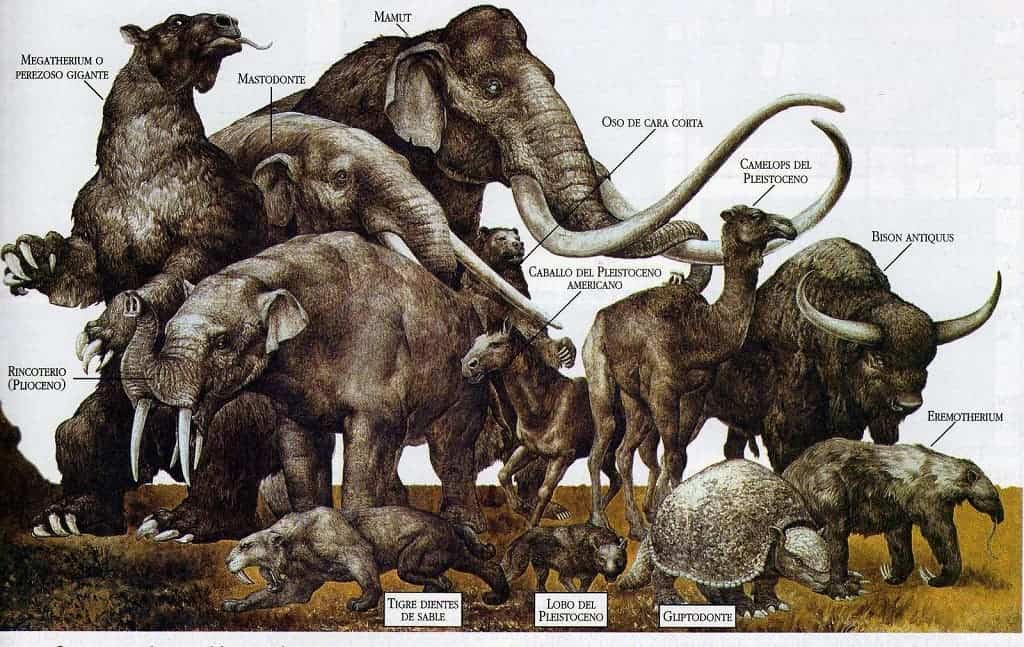
The Last Glacial Period, which we colloquially refer to as the last ice and lasted until around 11,500 years ago, caused the extinction of megafauna — multi-ton animals like mastodons and mammoths, along with formidable apex predators like saber-toothed tigers and dire wolves. But many other mammals, including humans, survived.
Scientists have always debated exactly what caused megafauna to perish. One often mentioned explanation is that large animals simply couldn’t find enough calories to sustain their hefty bodies, but if that was the case why did huge mammals like elephants, rhinos, and hippos survive? A new study has a different take, suggesting that these large mammals may have not had enough brain power to adapt to their rapidly deteriorating environment.
Outsmarting the ice age
Researchers at Tel Aviv University and the University of Naples examined data from the paleontological record on 50 extinct species of mammals from all continents, weighing from as little as 11 kg (24 pounds), in the case of the giant echidna, up to as much as 11 tons like the straight-tusked elephant. These extinct animals’ cranial cavity was compared to that of 291 evolutionary close mammal species that survived the ice age and still exist to this day.
This analysis showed that the mammals who survived have brains that are, on average, 53% larger than extinct species of similar body size. These big-brained mammals may have been better cognitively equipped to withstand the challenges of living during an ice age short on food, as well as better adapt to a new threat posed by humans and their dangerous weapons.
“We hypothesize that mammals with larger brains have been able to adapt their behavior and cope better with the changing conditions — mainly human hunting and possibly climate changes that occurred during that period — compared to mammals with relatively small brains,” Professor Shai Meiri of Tel Aviv University’s School of Zoology and the Steinhardt Museum of Natural History said in a statement.
In some places, insufficient cognitive resources had a disproportionate effect. While Africa has elephants and hippos, the largest mammals in Australia are the red and grey kangaroos (up to 100 times smaller than elephants), while in South America the largest survivors are the llama-sized guanaco and vicuña.
“Previous studies have shown that many species, especially large species, went extinct due to over-hunting by humans that have entered their habitats. In this study, we tested our hypothesis for mammals over a period of about 120,000 years, from the time the last Ice Age began, and the time that modern man began to spread all over the world with lethal weapons, to 500 years before our time. This hypothesis even helps us explain the large number of extinctions in South America and Australia, since the large mammals living on these continents had relatively small brains,” said doctoral student Jacob Dembitzer of the University of Naples in Italy, who led the study.
The end of the last ice was a time of great shifts in climate and habitat. In North America, for instance, grasses changed to contain more silica and fewer nutrients, so animals were not getting the right type of food they were used to. As the large ice sheet that blanketed North America and Europe retreated, it caused sharply defined seasons of winter and summer, forcing animals to migrate to new ecological zones to adapt. Suddenly new plants and terrain caused by the new seasons created a new balance in the ecosystem. Those who did not adapt eventually died off.
Although the new findings offer a compelling explanation for the demise of the iconic megafauna of the Pleistocene, their extinction is likely owed to a confluence of factors. Climate change, overhunting because of humans, and new diseases may have all played important roles in the extinction of over 35 different types of large mammals.
The appeared in the journal Scientific Reports.






